How to support your child on their gymnastics journey. Presented at the Oasis School in Cairo
USING YOUR STRAP BAR TO DEVELOP HIGH LEVEL BAR ROUTINES.
Video of Strap Bar Lecture. Presented at various gymnastics workshops 2025
Conditioning For Success
Power Point From Condition For Success.
| Movement Patterns | Basic strengthening | Intermediate | Advanced |
| Gait | Walk, Run, Skip, Sprint Front/ Back Basic Leg curl | Run, Skip, High leg kicks, Sprint, Front back. Leg curl or Leg curl Push Up. | Leg curl push up from mat. |
| “Squirrel Sprint” | “Squirrel sprint” | ||
| Squat. Jump/Land | Roll jump w/ mat | Roll Jump, Squat w/ light weight | Roll jump Up to height. Squat w/ weight |
| Hip Hinge. Jump/Land | Jump stick. Roll off mat to stick. Frog Jumps. Leg lifts | Frog jump to height. Standing back tuck stick.Flip w/ stuck landings from Beam. 1/2 leg lifts | Standing Back Tuck UP to height. Flip with twist stuck landing Variation of 1/2 leg lifts |
| Lunge. Jump/Land | Lunge, Lunge kick . Pistol Squat from Mat Mountain Climber. Toe raises | Pistol squat. Single leg roll jump. Mountain Climber w/ weight Toe raises w/ weight | Pistol squat on Beam, Single leg roll jump to mat. Mountain Climber w/ weight . Toe raises w/weight |
| Hollow/ Arch | Basic Hollow/ arch shapes | Hollow/ arch rocks. Candle stick pull. (F/B) | Hollow/ Arch Rocks. Candle stick pull from mat |
| Twist/ Rotation | Seated twists w/ foam. Side arch | Seated twists w/ weight Start hollow roll to arch back to hollow. Candle stick turn toes/ heels. Handstand pirouettes | Twists w/weight. Candle stick turn toes/heels. Hollow/arch rollover. Back extension roll pirouettes |
| Pull (both grips) | Pull up. Seated rowing. | Pull up w/ pirouette. Seated rowing. | Pull up w/pirouette w/weight |
| Push | Push up. Dips. Handstand | Various push ups (narrow, wide, hand positions). Dips. Handstand Push Ups. | Handstand push ups. Various push up. Dips. |
| Throw/ Catch | Over head and under hand throw and catch foam or ball. | Overhead and underhand throw and catch medicine ball. | Add speed |
| Kip Pull | Laying flat bring arms from up to down w/ elastic. | Candle stick pull. Kip pull with tighter elastic. | Candle stick pull from mat. Kip Pull w/ elastic. |
| Cast Push | Swing on P. Bars. Arm lifts w/ light weight | Swing on P. Bars. Arm lifts w/ heavier weight. Cast handstands | Swing HS on P Bars. Sets of arm lifts w/ weight. Cast Handstands |
With gymnasts on a TEAM TRACK I begin to break things down by ages. What my goal is at each stage od development. Here is a sample.
6-8 Year Old. Stage 2. Advanced Physical Preparation Phase
10-12 hours per week
General
Multilateral development of skills and flexibility. Discipline for form and execution through the use of compulsory elements. NOW IS THE TIME TO LEARN EXCELLENT BASICS
GET THEM TO LOVE THE SPORT
Conditioning
General strength development of working all joints. Lay base for future. Work to Balance muscle groups and build for body shape. Start with static shapes then move to moving through positions.
| Shapes | Moments |
| Straight | Pushing |
| Hollow/ Arch | Pulling |
| Side Hollow/ Arch | Jumping/landing |
| Handstands | Hollowing/Arching (Korbet) |
| Arm/ shoulder pull down (kipping) | |
| Arm/shoulder extension (casting) | |
| Throwing/ Catching | |
| Kicking |
Keep it fun. Make it a game.
Flexibility
Develop maximum range of all joints through static exercises. NOW IS THE TIME TO MAKE THE BIGGEST INCREASE IN FLEXIBILITY.
8-10 Year Old. Stage 3 A. Beginning Competition Preparation Phase
GENERAL
Continue multi-lateral development. Help gymnast be as well rounded as possible. During this stage most will decide they mentally want to make the commitment toward a higher level
As they get closer to 10 yrs I begin to explain mechanics. What makes the body work. I want constructive play. It should still have an element of fun
12-16 hours per week
You must begin giving the gymnast some control of their gymnastics.
Begin doing mental rehearsal of routines and skills.
CONDITIONING
Specific exercises (for intermediate skills). Harder calisthenics exercises.
Test for strengths and weaknesses.
Light to Medium bounding exercises.
Periodization not a major concern.
TEST strength regularly
Once a gymnast can perform a set of exercises un assisted. Add resistance, increased form, or speed. BUT NOT ALL at same time. WHAT IS YOUR GOAL?
For example.
Straight body push up.
Step one- keeping back straight through out, set of 10.
Step two- added resistance through weight or elastic bands. Continue until straight back throughout set of 10
Step three- Remove weight for set of 10 timed. Straight back throughout.
Example 2
Over Grip (OG) Pull up 5 x Under Grip (UG) Pull up 5 x
Step one OG pull up switch grip UG pull up until 6x (3,3)
Step two OG pull up, pirouette to UG pull up, pirouette OG pull up…
Step three with added weight OG pull up 5 x, UG pull up 5x
Begin incorporating speed drills into conditioning.
FLEXIBILITY
Static as well as Active. NOT JUST sit in split.
Kick and HOLD. Dynamic – medium speed. Work to balance L and R side
Test flexibility
Alberta Gymnastics Federation High Performance Camp.
Alberta Gymnastics Federation High Performance Camp. November 2024

In order to get the most out of our time together I wanted to give my plan for the weekend and my expectations.
UNEVEN BARS PLAN, EXPECTATIONS, and RESOURCES.
EXPECTATIONS for Training Camp:
I would like All levels to be able to show me at least 1/2 routine (1st 1/2, 2nd 1/2). It is OK if parts are spotted. Please be ready to AT LEAST show me combinations. We have a lot of ground to cover.
For example: The following are IN ROUTINE not individual skills.
Level 8/9 show an upgraded dismount. Can be spotted or into pit.
Level 9 show an upgraded release move. Can (should) be spotted. For example- 1st 1/2 routine with shoot over or Pak (spotted ). 2nd 1/2 with upgraded dismount (spotted or pit)
Level 10 same as level 9
Example Routine: these are JUST examples.
Example: Level 8.
- Kip cast 1/2 pirouette.
- Clear hip handstand.
- Kip cast toe circle around bar. Jump down.
Go over pit
- Kip Cast Hand
- Giant, Giant
- Double tuck. (upgraded dismount)
Example: Level 9
From outside bar-
- Jump to high bar
- Kip Cast handstand
- Clear hip Handstand
- Pak (spotted)
- Kip cast Handstand.
Middle section
- Kip Cast handstand (from inside bar)
- Toe handstand 1/2 pirouette
- Toe shoot to high bar.
Go over pit
- Kip cast Hand
- Giant 1/2
- Front giant 1/2
- Open double tuck. Etc.
What has made me successful at the National and International level is having a plan. Both LONG and SHORT term planning as well as designing a practice schedule to be efficient and have the gymnasts prepared for competition.
LONG TERM PLAN, 4+ years. What skills will a gymnast need to be able to compete at the next Olympic Games.
SHORT TERM PLAN, What skills will a gymnast need to be able to compete this season.
PRACTICE PLAN, This is more specific to your gym as well as individual gymnasts. How many hours do you have to train a day? A week? How much or a work load can your gymnast handle physically? Mentally and emotionally?
Tony’s 10 commandments for Bars.
- NEVER be out of Routine shape.
- Have your dismount FIRST. Maybe a year before the routine.
- Master the Basics then hit them every day.
- Strap Bar is an event.
- Pick the right skill for the right kid. (a gymnast who has fear of back tumbling on floor is probably NOT going to be a Tkatchev kid)
- HANDSTANDS- everywhere, every day.
- Don’t paint yourself in to a corner. (ie. you do not teach a back flyaway, you teach a front and double front- if the double front gets devalued or a gymnast has a growth spurt and now has trouble with the front swing- what do you do?)
- Introduce them to every skill they may need by 13 years old.
- Have a plan and a back up plan
- Let them play.
Every skill of value starts with a great basic circling element. In a race to put together a routine we have a tendency to chase the skill before we have established a truly great base element.
- Clear hip.
- Toe handstand. (front and back)
- Stalder. (Legs together and straddle) (front and back)
- Giants Back and Front.
What ever the base skill is for your goal element you MUST be able to do 4-5 in a row consistently. Do it first on STRAP BAR
I will continue to add to this until the day of the clinic so you may want to check back for additional resources.
Some thoughts from my plane ride in. Updated November 6. 2024
My plan for uneven bars is that the gymnast needs to be 1+ season ahead for their dismount. Because it comes at the end of their routine there is a certain amount of endurance they need. They will already be fatigued from their routine, they should just be able to let muscle memory takeover.
You must have a truly great base if you are going to build on it. All circles start on strap bar. Progress to 3-5 in a row.
Then they must be able to do 3-5 in a row on the bar before you add to it (adding a pirouette or a release).
While they are perfecting circles we are doing tramp/ TT drills for releases and pirouettes.
Things to remember-
Teach them to throw and catch.
Teach the body shape early. Continue to reinforce them. Teach them how to use them.
1. Hect action skills
- Tkatchev (giant)
- Ray (toe hand)
- Hindorf (clear hip)
- Ricna (stalder)
Shaposhnikova
Maloney
2. Jaeger
3. Gienger
I tend to teach 1 and 2 at the same time because they share some actions. #1 has so many uses and can be done either way. The Jaeger is great because it covers the requirement for undergrip skill and can be taught in either under or “L” grip.
Prerequisite will always be a GREAT base skill. 3-5 x in a row.
OPEN skills teach from a swing. It forces the correct tap and then when you want to use it in combination it is already there.
Group 1 (Hect)
Stage 1
- Back extension roll hop.
- TT Bar Hop
- Straddle roll grab
Stage 2
- Back Extension Roll off mat kick back (almost a bridge)
- Back drop to stomach drop (straight)
Stage 3
- Base skill to hop
- TT bar flight to back
- Back drop to stomach drop (Straight) catch noodle
- Jump Back off bar catch
Stage 4
- With flight over bar no catch
Group 2 (Jaeger)
Stage 1
- Forward roll to handstand undergrip
- Stomach drop with TT bar
- Pike or straddle roll grab
Stage 2
- Forward roll to HS in undergrip Hop change
- Sushinova off beam or mat to floor
- Front layout sit up on bounce handstand
- Stomach drop on TT bar hop off.
Stage 3
- Gainer front off TT into pit
- Front kaboom on tramp (3/4 layout. Sit up)
- Back drop front pike tramp
- Jump Back off bar catch
Stage 4
- Spotted Front giant with release to straight. Eyes on bar
- Front Kaboom sit up and catch noodle
- Front layout sit up catch noodle on Bounce HS
- Front 1.25 on tramp
Stage 5
- Spotted jaeger from swing. (Grip doesn’t matter)
Group 3
Stage 1
- Layout flyaway from swing
- Leaf drop
Stage 2
- Layout flyaway to back from swing
- Leaf drop 1/4
- Layout on tramp jump 1/4
- Cruise on Tramp
Stage 3
- Continue with layout flyaway from swing
- Leaf drop 1/4 catch noodle
- Gainer off tramp or TT
- Cruise on tramp catch noodle
- Back kaboom
Stage 4
- If you have a trench bar- Layout flyaway to stand on side of pit
- Gainer w/ 1/4 twist off tramp or TT reach back
- Kaboom layout 1.25 to stomach. Catch noodle.
Lecture Videos and Slides Italy Master Clinic
Presentazioni delle lezioni per l’Italia Master Workshop.
Developing a Plan for Uneven Bars
Be A Better Coach
Combination Tumbling
Yurchenko Vaulting- Go BIG
Gym Momentum Training Camp, Bright Raven Gymnastics.
Last year I had to cancel all Gym Momentum Camps. This year I decided to start small and slow and see how it went.
The first camp was held at Bright Raven Gymnastics in Rochester, NY. There were somethings we had hoped to do that was impossible. I had wanted to bring in Steve David but the border with Canada was not open yet. Jamie Donkin and I left early on Friday morning to start the drive. We planned the camp for the next 6 + hours! Helping me on Uneven Bars at camp was AJ Banker from The Victors Gymnastics.
Bright Raven Gymnastics East side location is simply one of the nicest gyms I have ever been in. The gym was big and well appointed. We did a few of our group meetings in their dance room which was a perfect more intimate setting. Everyone at Bright Raven made us feel so welcome. I look forward to going back next year where we will have a more “normal” camp.
There is still space in Gym Momentum Camp August 20-22 on Long Island in NY.
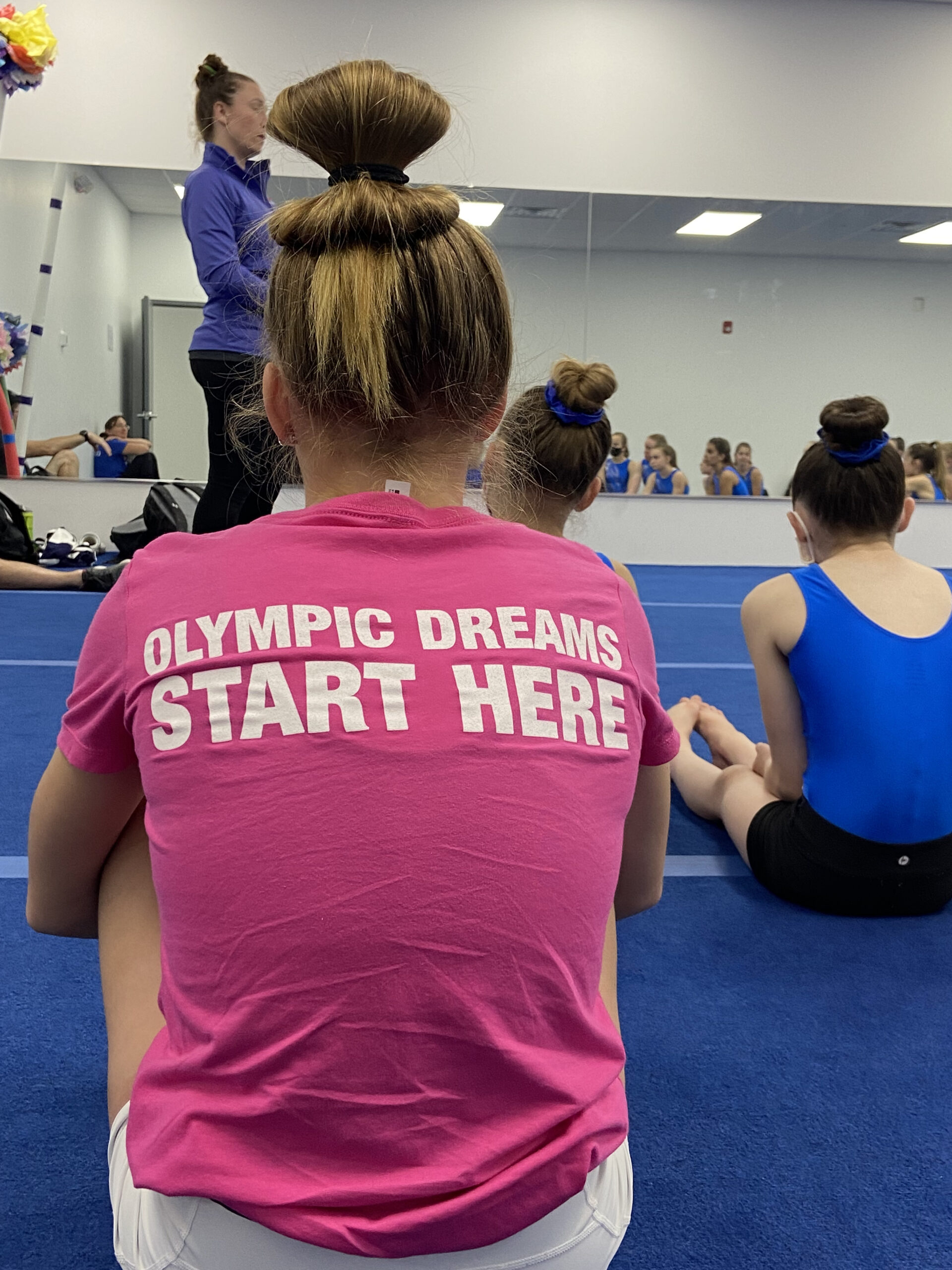
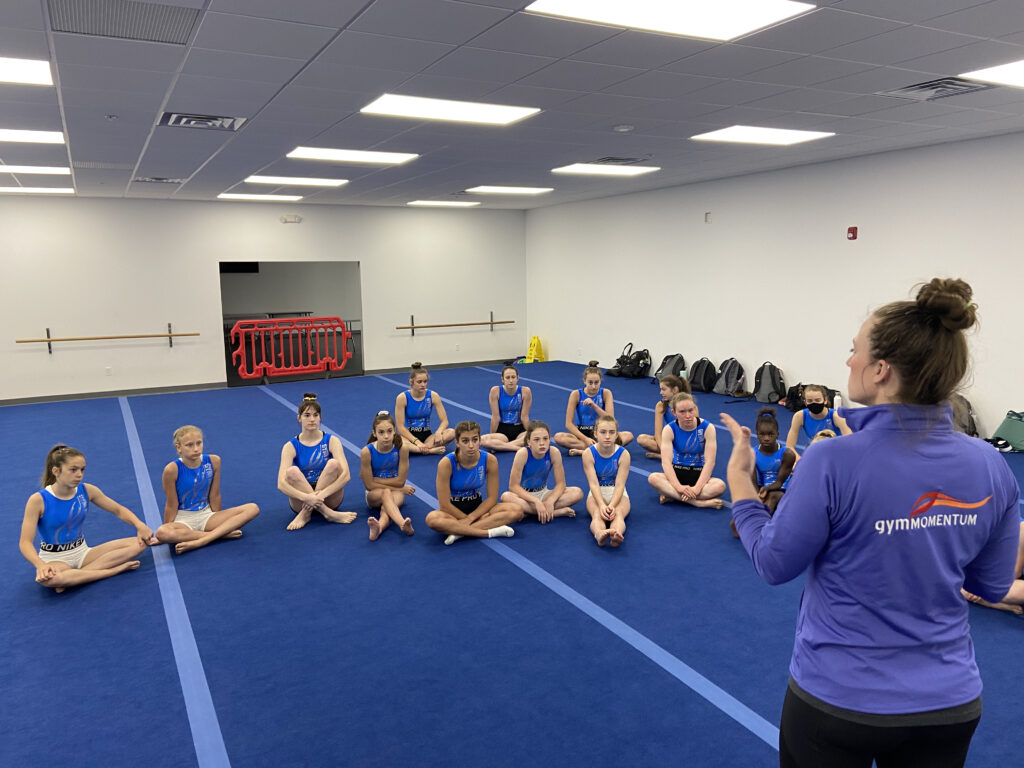
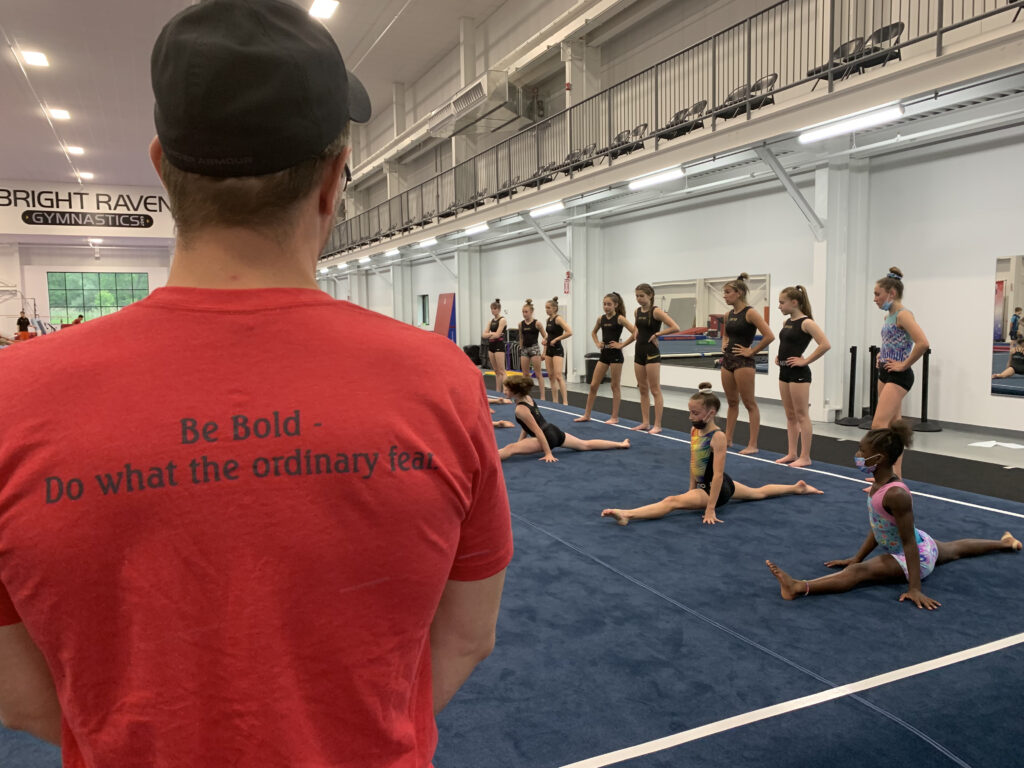
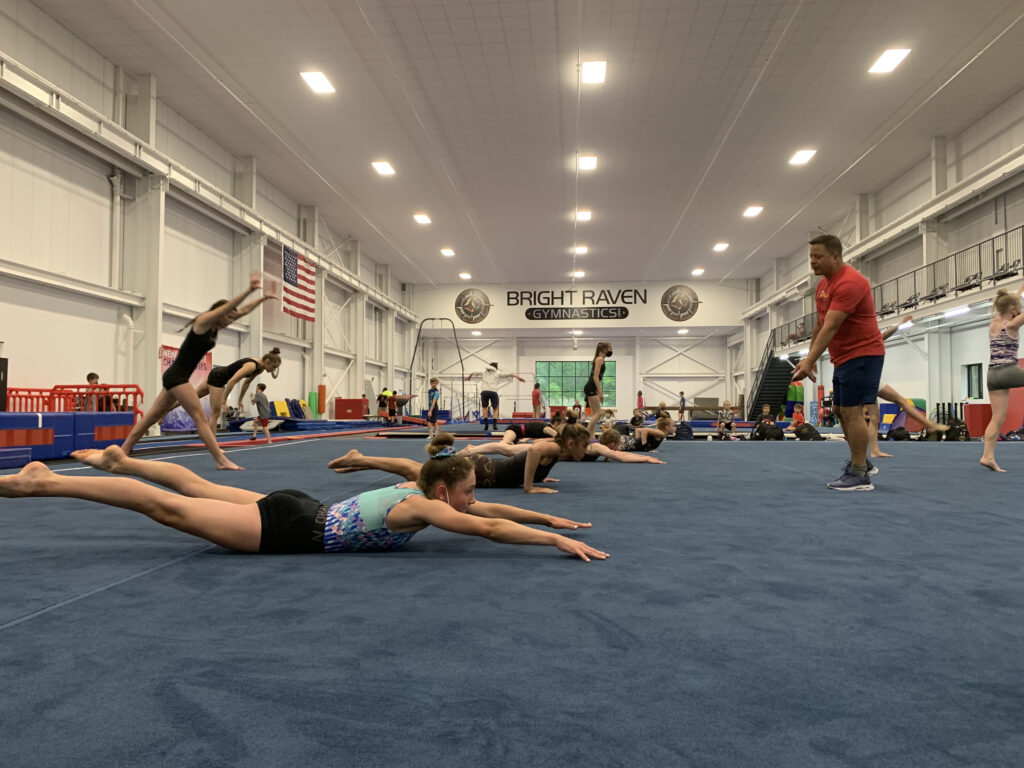
HAPPY COACHES, HAPPY KIDS!
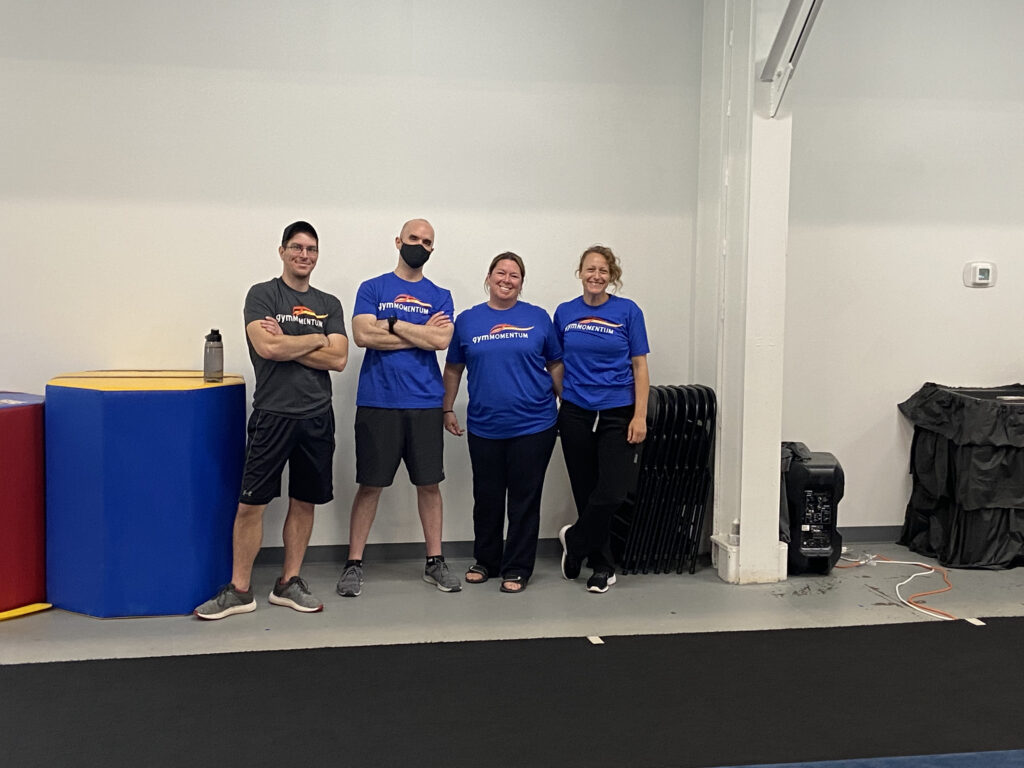
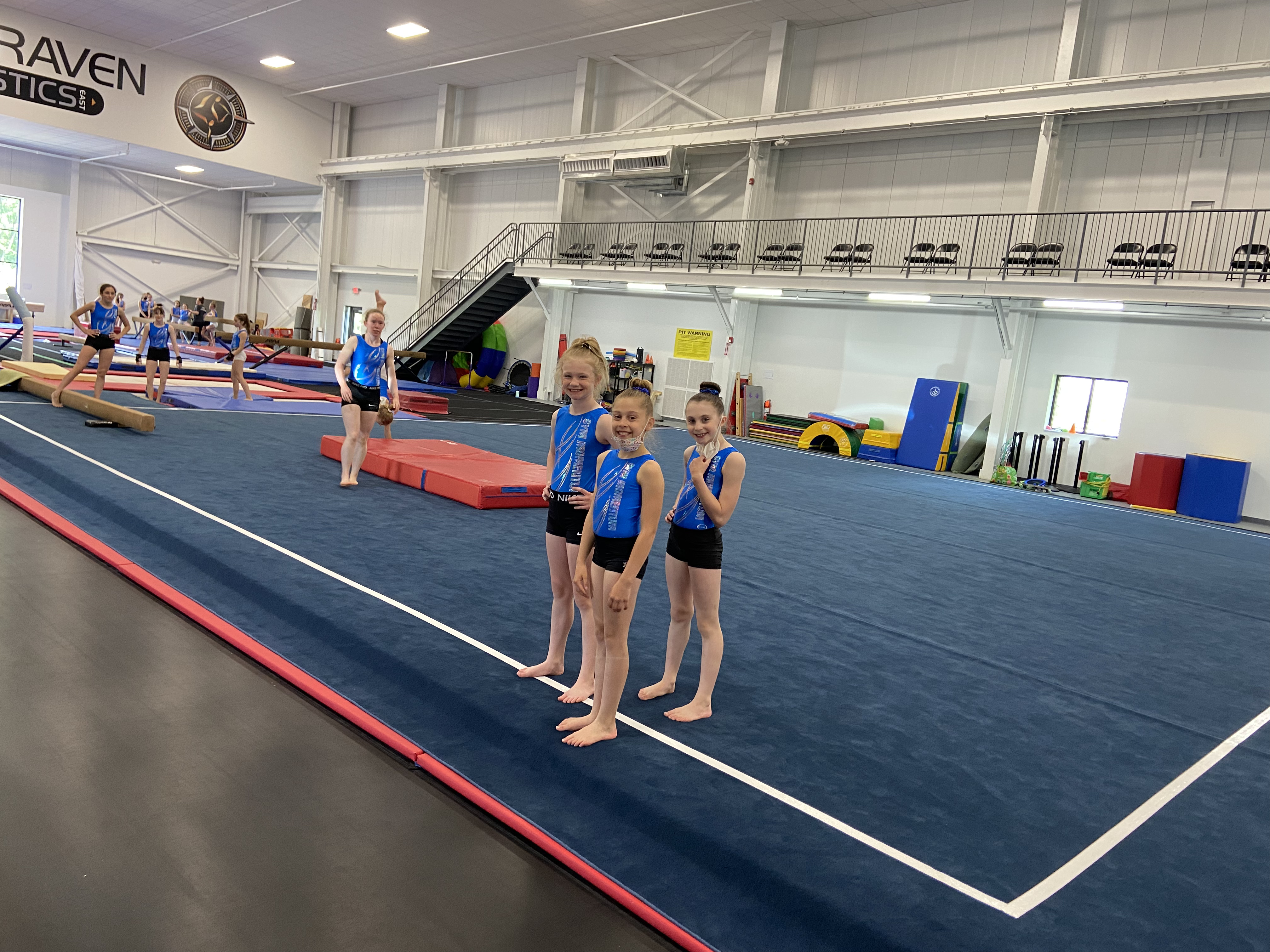
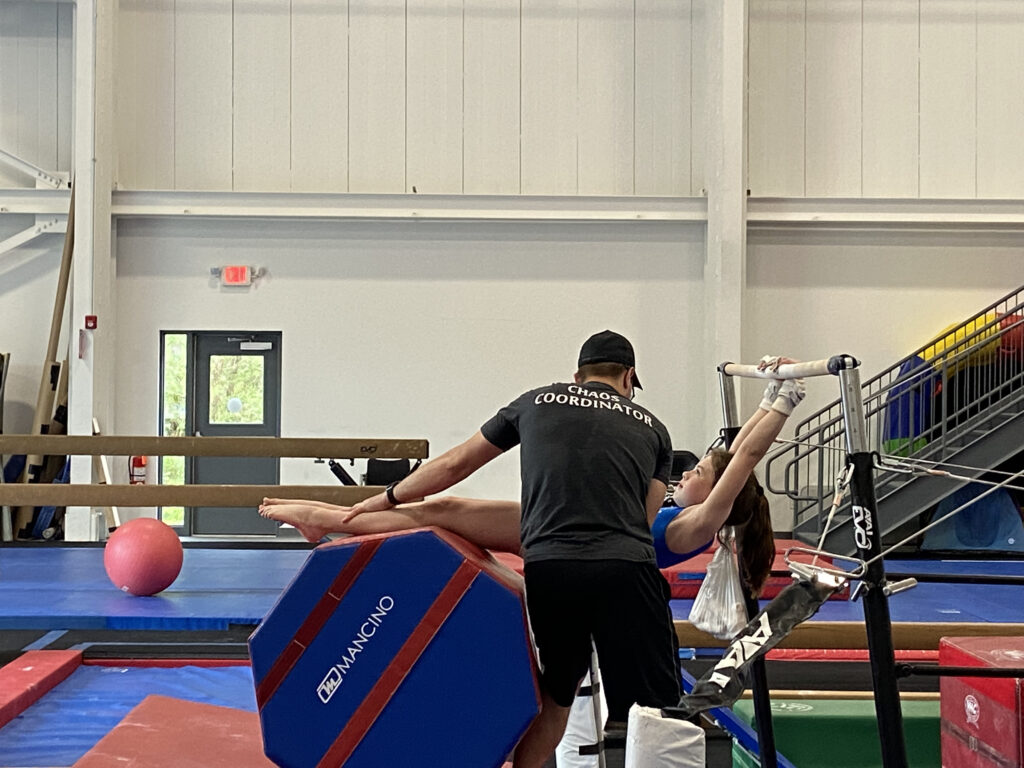
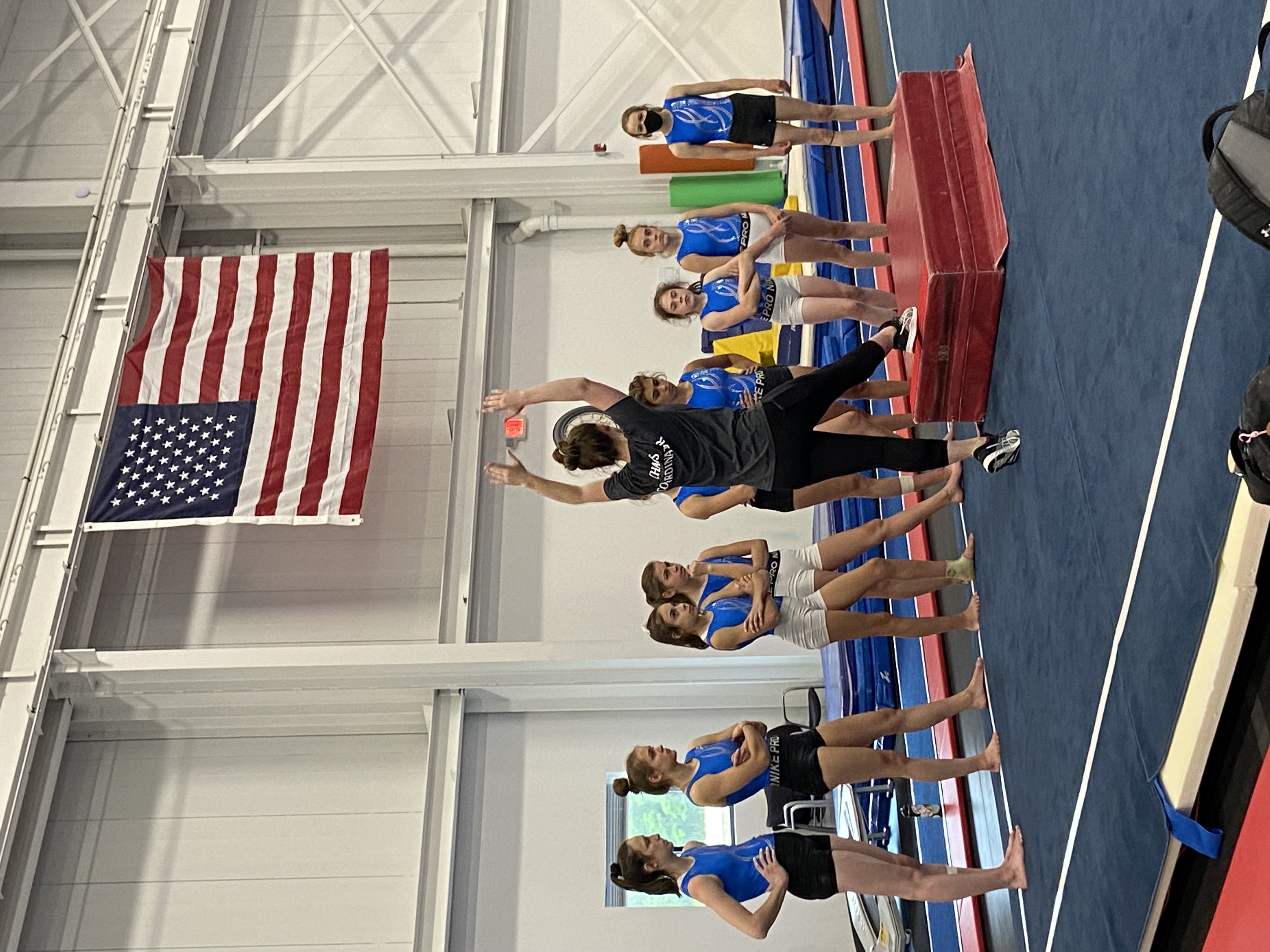
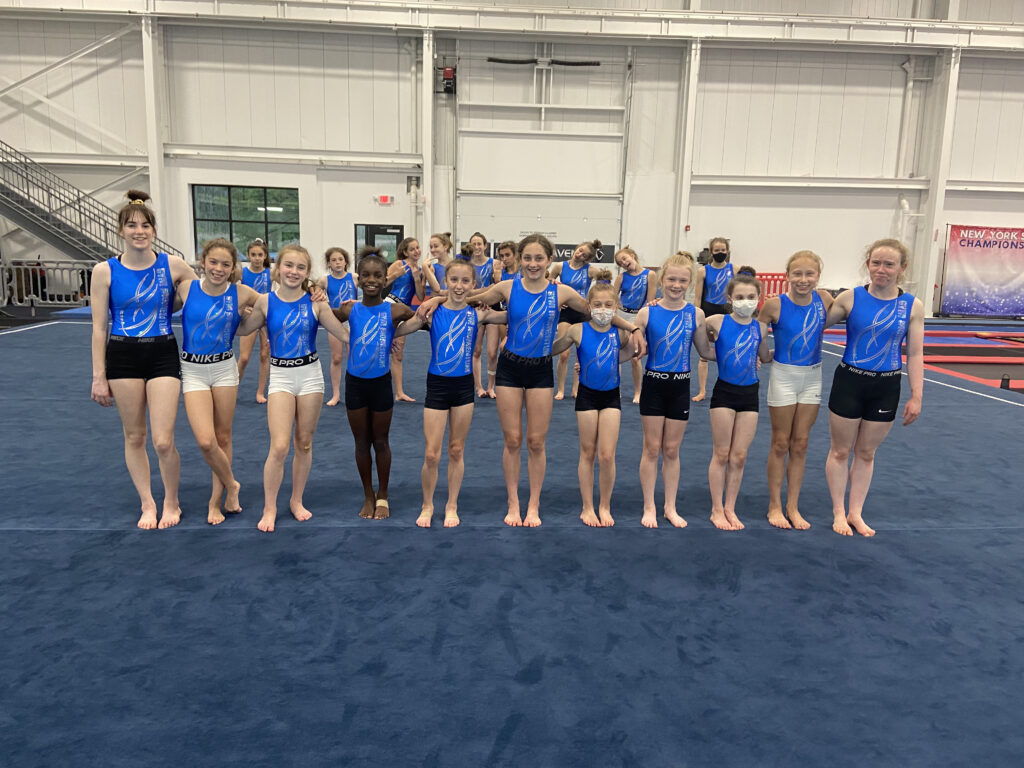
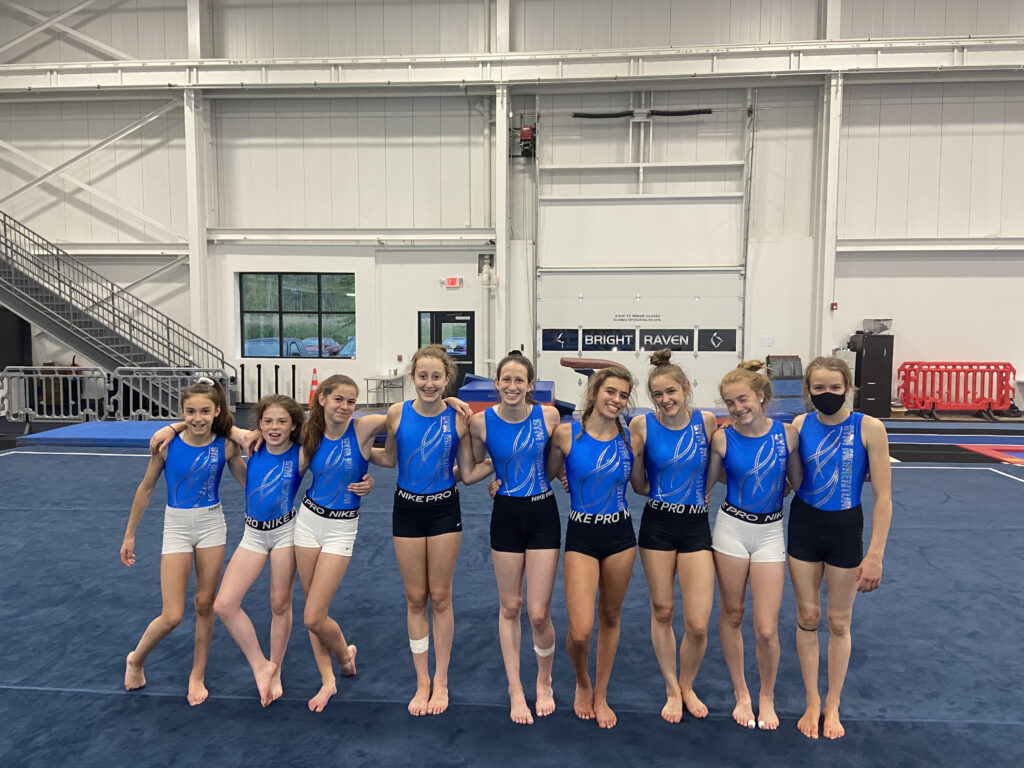
AWARDS
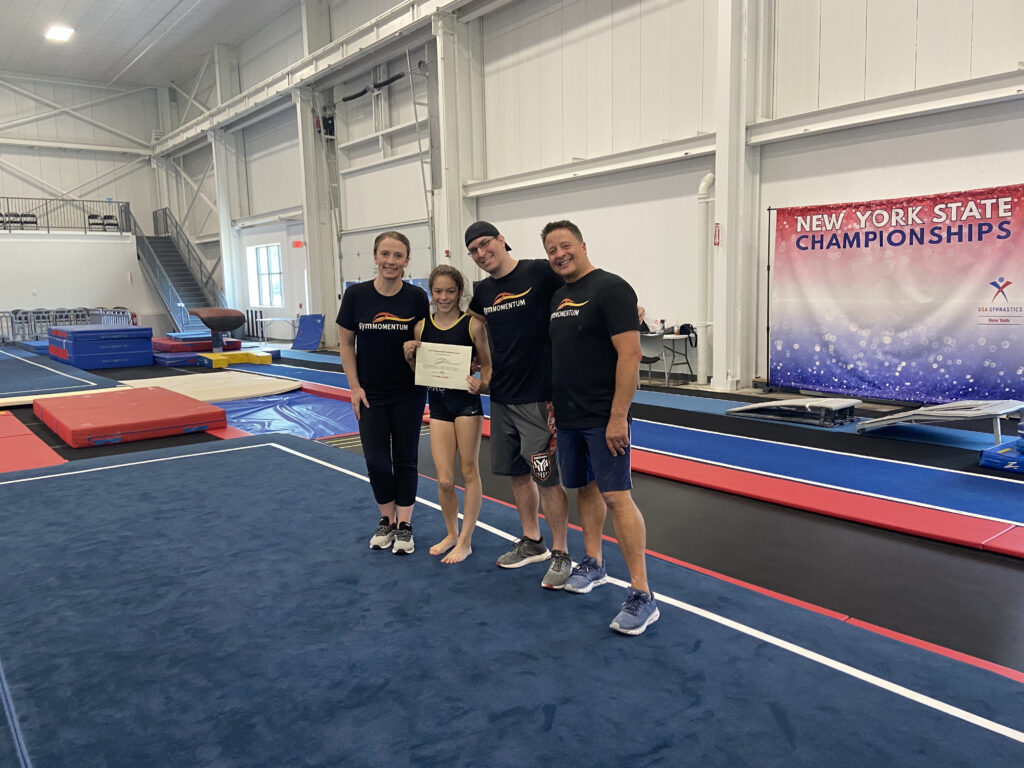
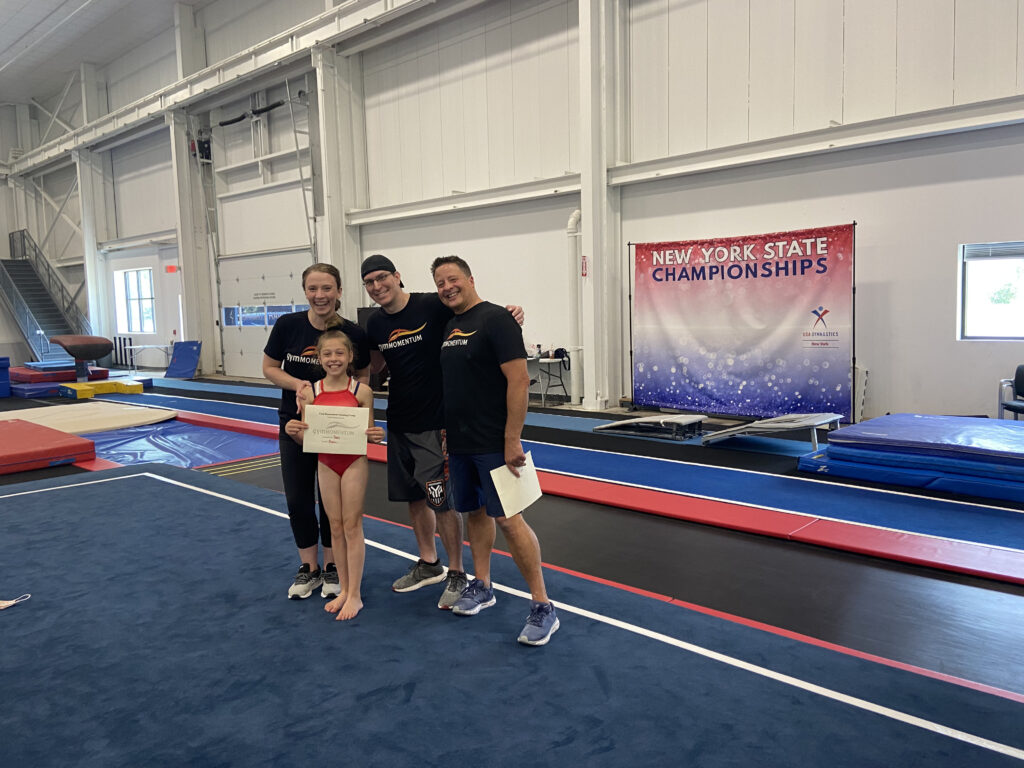
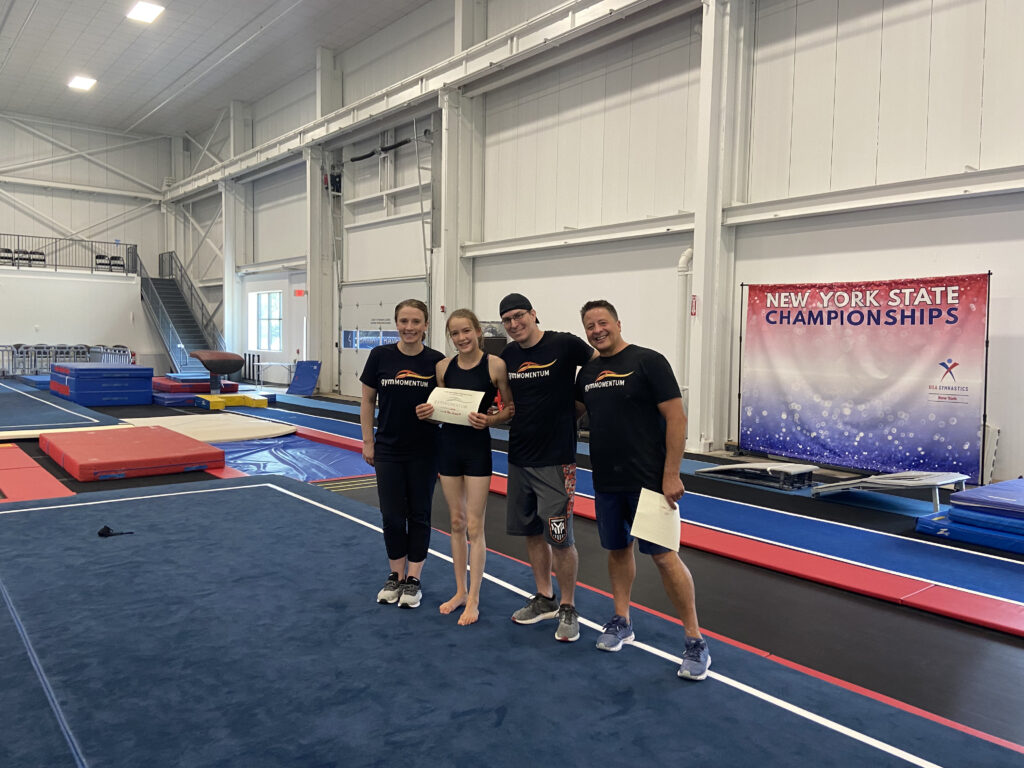
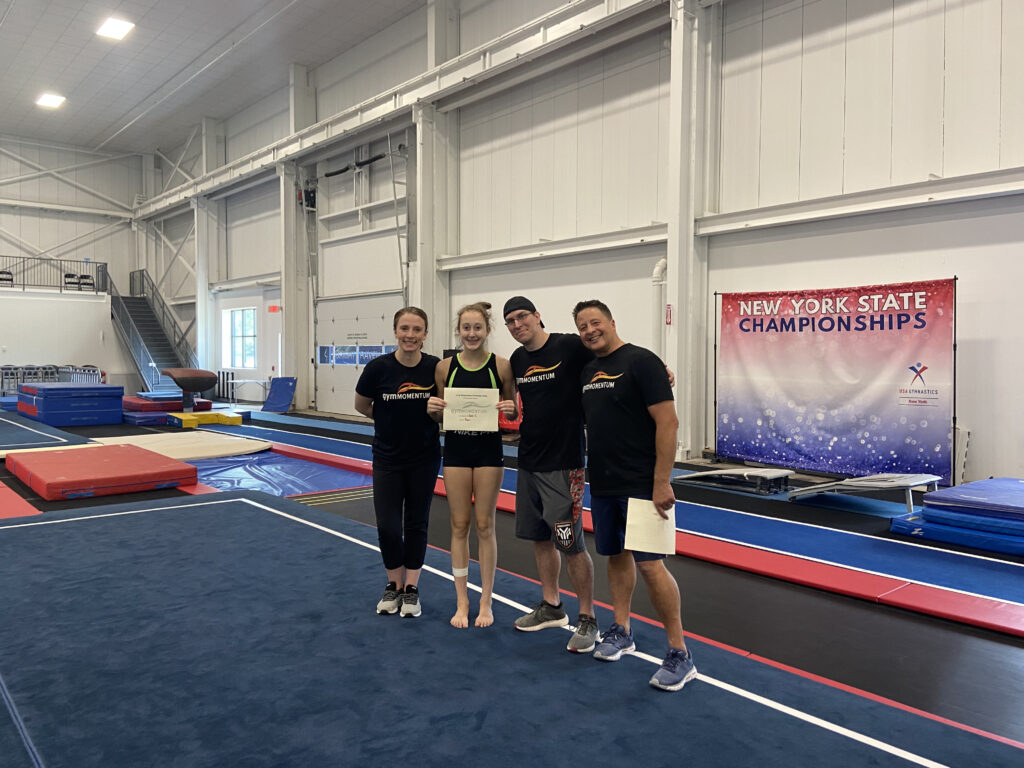
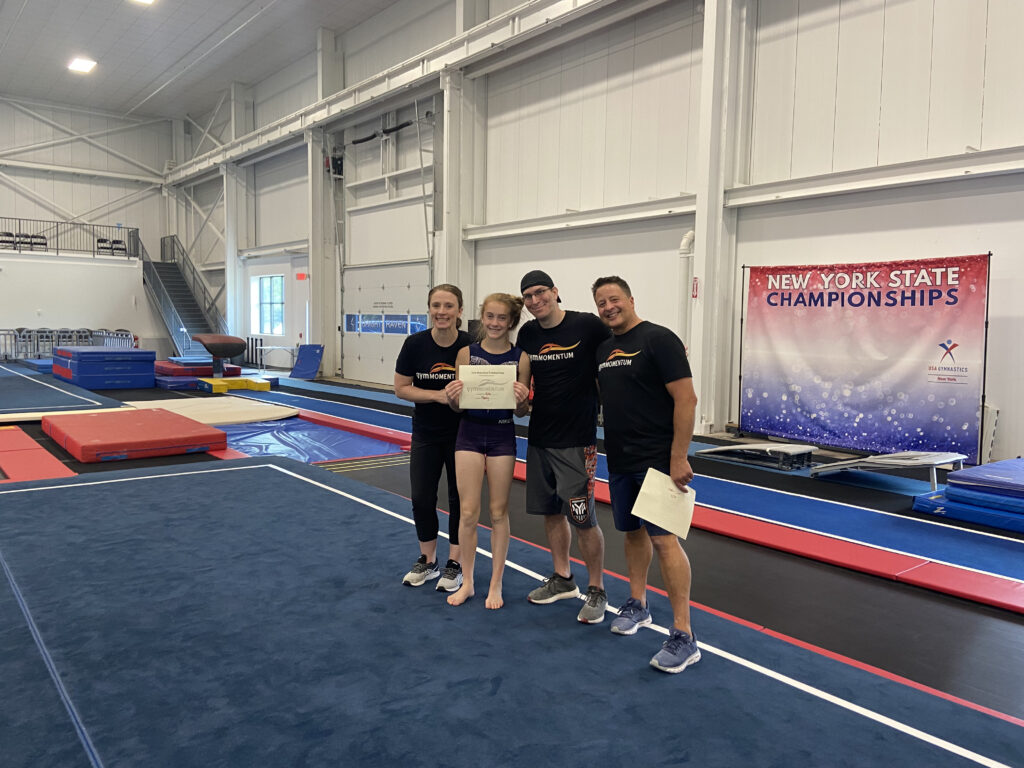
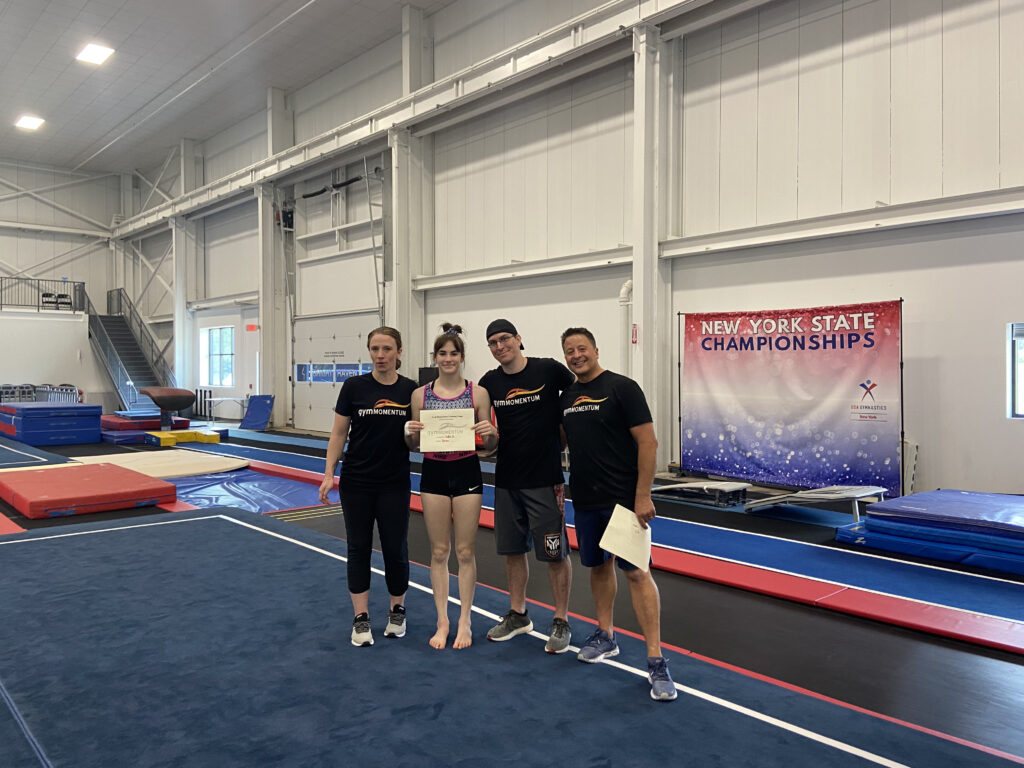
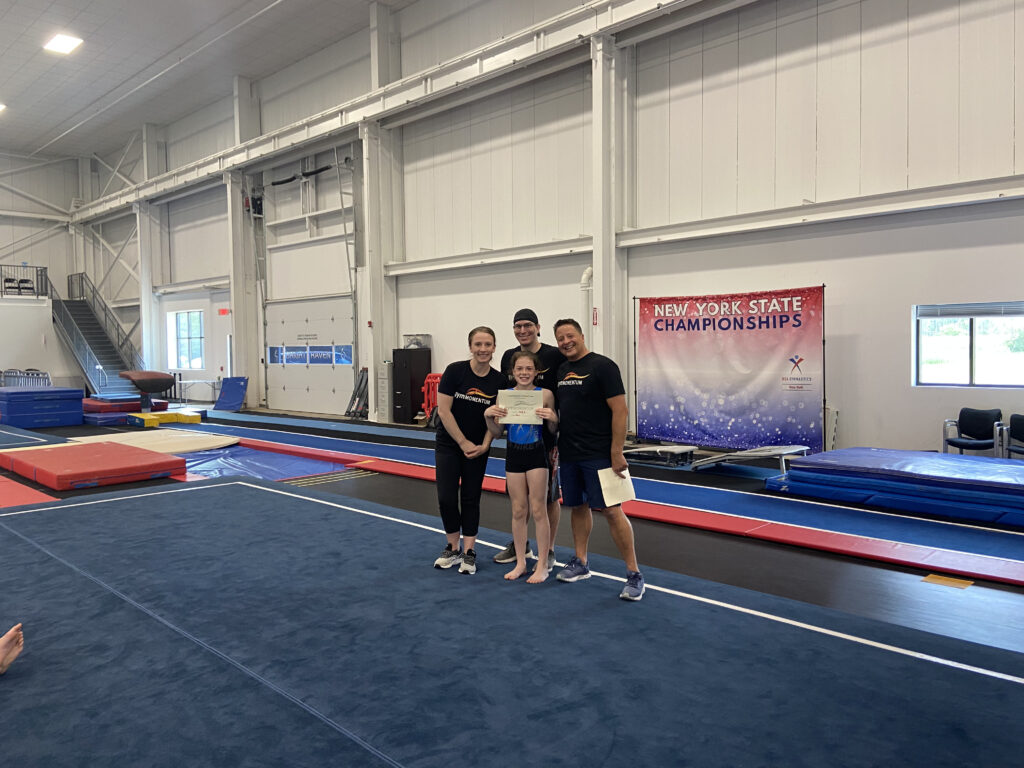
Preparazione Fisica per le Ginnaste da Fare a Casa
Visto che molte palestre in Italia sono chiuse, molte ginnaste non hanno un posto dove allenarsi. Ho visto molte foto e video di ginnaste che fanno il loro meglio a casa. Persino con i trampolini in giardino, con gli esercizi di coreografia del corpo libero nei loro saloni o addirittura usando lo schienale del divano come trave!(per favore non fatelo)
Ci sono 10 azioni di base che bisogna mantenere forti così quando la palestra riapre si può ricominciare più velocemente.
•aerobica e anaerobica di base. La ginnastica è per lo più uno sport anaerobico. Ci sono più sprint che lunghe distanze
Questa potrebbe essere la parte più semplice da fare. Se hai le gambe puoi correre. Pensa al tuo esercizio al corpo libero
Dopo 5 minuti di riscaldamento: corri durante la parte di coreografia e fai uno scatto durante la diagonale.10x
Se hai una bike a casa
Dopo 5 minuti di riscaldamento: velocizza o aumenta la resistenza durante la diagonale.10x
MOVIMENTI BASE DELLA GINNASTICA
•verticali
•salti e atterraggi
•giro è presa
•lanciare e prendere
•tirare e spingere
VERTICALI
•30 secondi di verticale ogni volta che sei in camera tua
•verticali con prese diverse
•verticali di forza
•rimbalza in verticale giù dal letto!
SALTI E ATTERRAGGI
LA ginnastica femminile e al 75% di gambe. Se non vuoi fare altro assicurati che le tue gambe rimangano allenate.
Ci sono milioni di esercizi che si possono fare. Questi sono solo esempi.
Squat: con o senza pesi. Non hai pesi a casa? Usa tua sorella o tuo fratello! Prendi uno zaino con i libri e mettilo sul tuo petto.
•mantieni una buona forma
•squat a una gamba
Caviglie su e giù con un partner o con un elastico
Hamstring push ups con i piedi sotto al divano.
Salti e arrivi ad una gamba.
Candela mi alzo e salto.
•a una gamba
•con entrambe le gambe
Affronti saltati
Affondi con la sedia
Lancio e Cattura
Dobbiamo avere un forte coordinamento di occhi e mani. Prima di poter prendere la barra parallela dobbiamo essere in grado di prendere una palla.
Cucchiaio (hollow) e Acrh
Hollow hold 30 secondi. Rock 15x
Lato Arch hold 30 secondi Rock 15x
Arch Hold 30 secondi. Rock 15 x (sweep arms down like in front layout)
Lato Arch hold 30 secondi. Rock 15 x
Alza i fianchi. 10 x (straight legs)
Bent leg Plank Hold 20 seconds
Una gamba up do 10 each X
Lato Plank hold 20 secondi twist (lawn mower) con o senza pesi 10
Spingere Plank Hold 20 seconds. 10 shrugs. 5 each arm up to push up and back.
Lato Plank hold 20 secondi torcere (lawn mower) con o senza pesi 10
Hollow hold 20 secondi
V up or Straddle V Up 10 x
Press through to spingere
Spingere
Regular
Wide
Narrow
Beam hands
Press Handstand pirouette
TIRARE E PRENDERE
(anche un buon modo di farsi degli amici). La verità è che in palestra di solito ci dimentichiamo della coordinazione. Se non possono prendere una palla, non possono prendere la parallela.
L’Azione di lancio (lancia una palla da calcio) è in tutti gli elementi acrobatici in avanti.
L’azione di lancio all’indietro è in tutti gli elementi acrobatici in dietro.
SPINGERE E TIRARE
se non hai accesso a una parallela.
•trazioni sullo stipite della porta 10x
•piegamenti
•piegamenti in verticale
•piegamenti a quadratino, i piedi su una sedia o sul divano
•planche

A special Thank You to Eleonora Orlandi for helping me with Italian Translation. Any mistakes are MINE. She is wonderful!
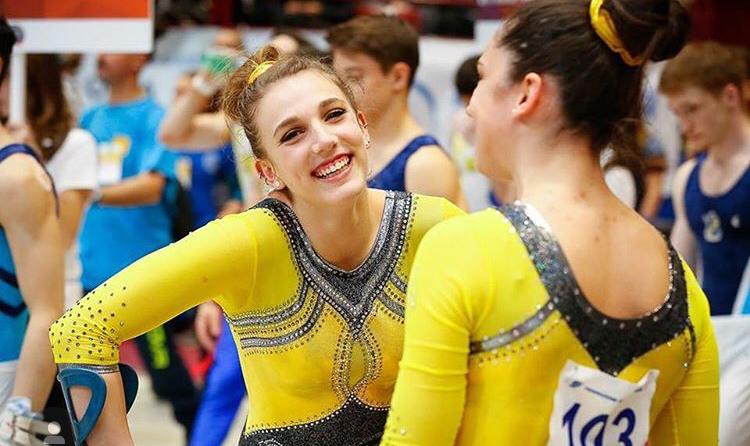
USING YOUR STRAP BAR. 2019 USAG National Congress Lecture
Mental Blocks
It’s a fundamental truth that sometimes the greatest barrier to your success is yourself. Not that you don’t try, aren’t talented, or don’t have the resources to succeed, you do. It’s just that a self-limiting mindset can creep into your view without you realizing it, keeping achievement of your goals forever on an unreachable horizon.
Science can help.
Specifically, cognitive psychologist Amanda Crowell, with awareness of what she calls “defensive failure”, which is what happens when you want to achieve something, think about it constantly, but you just don’t do it. It’s not just because you’re lazy or lack willpower, but is often instead from, as Crowell says “three powerful mindset blocks keeping you locked in a cycle of defensive failure.”
Here’s Crowell’s TEDx talk on the topic.
What follows are the three mental blocks Crowell identifies and how to overcome them.
1. “I just don’t think I can do this.”
Visualizing success has been proven to help achieve success–and the opposite holds true too. There is a quote I see often,
“Those who think they can and Those who thing they can’t ARE BOTH RIGHT. “
If you believe you can’t do it, it’s far more likely that you can’t, won’t, or won’t even try. And the only way you can actually fail is when you quit, don’t improve, or never try.
The belief that you can’t do something often involves incorrect assumptions or limiting scenarios that exist only in your head. As Crowell illuminates: “You think that some people have the talent or the genetics to do this thing, and you don’t. If you believe that at the core of success is talent and genetics, then this rookie mistake matters a lot; it’s the proof you need that you didn’t have what it takes.”
And that’s where you get hopelessly off-track; when you finally find the proof (you didn’t consciously know you were searching for) that you… just… can’t do it.
Crowell says to overcome this mental block, know that mistakes are not proof that you never should have tried. They’re merely setbacks intended to help you learn and grow.
I like to remind myself that any failure I experience happens for me, not to me. You can also draw on what I call the “reality reservoir”–think of other things you’ve accomplished that you originally didn’t believe you could do. That will embolden you.
Finally, tell yourself that any setbacks you might encounter will pale in comparison to the progress you’ll have already made.
2. “People like me aren’t good at this.”
I fell into this mental block when I first started gymnastics. I was not that strong and I felt I was slower than the rest. It took me a while to build my strength. As I got stronger the skills became easier. In the beginning I was convinced that people like me would never be good at this stuff.
Crowell says the solve here is surprisingly easy (and she’s right, it worked for me). Find others who are like you and were successful. Reality is that 99% of us are doing skills in ways that someone else has already done.
3. “I feel like I have to do this thing, but I don’t really want to.”
As Crowell puts it, “Secretly, you don’t want to do it; you just think you should want to do it. You value it for the wrong reasons.”
I’ve coached many past this mental block; they were chasing someone else’s dream, living someone’s else’s story, trying to achieve things they were expected to (versus what they really wanted to).
Deep down, if you don’t really want to do something, you won’t (or at least will do so with agony and inefficiency). If faced with a choice to a) take a step towards achieving that thing you don’t really want or b) do anything else you want to do, the latter will win every time because the urge for the former isn’t strong enough. All of this makes you feel like you’re a procrastinator or a failure or worse. A vicious cycle.
The solve here requires getting honest with yourself about what it is that you really want to accomplish, and why. Find the intrinsic reason behind the why and then, as Crowell suggests, use it as a personal energy source to keep you moving towards realization of that goal.
So use the advice here to turn those mental blocks into building blocks of your future success.
This was adapted from an article I read in INC Magazine.
Intention
in·ten·tion \in-ˈten(t)-shən\
: the thing that you plan to do or achieve : an aim or purpose
: a determination to act in a certain way : resolve
This time of year many people make NEW YEARS RESOLUTIONS. They set goals for the year in business, in life and in the gym. Goals are great but a goal must start with intention. The problem with just setting goals is that goals generally do not allow for failure and in failure there are many lessons to learn.
In the gym, it is vital for both coaches and gymnasts to have INTENTION in their training. You must train with a purpose. Training is the path which leads to success. If your have no purpose to your training, it is easy to get lost.
The past few years I have done many, many clinics at many gyms through out North America and into Iceland and Europe. When I walk in the first thing I ask is, “What is the goal? What are we going to do?”
I can always tell a program that has a purpose. They are confident in the process and progression. The gymnasts know what they are doing and where they are going.
– Does your team have intention? Or are you wandering around?
Gymnasts MUST have intention as well. When they get up on a Beam, or get ready to Vault or Bars or Tumble- What do they INTEND to do?
They may wobble or fall but then they make a correction.